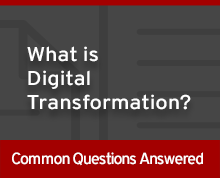The Sierra Club is a venerable environmental advocacy organization. For years, it has relied on direct mail solicitation to expand its membership. Now as it continues to move to the digital age, it faces a plethora of choices. As Chris Thomas, Chief Innovation Officer of the San Francisco-based Sierra Club, has found, moving to the digital world can be a double-edged sword. Many opportunities become available, but then one must choose which ones to pursue.

The Enterprisers Project (TEP): What are some of the most challenging technology and business issues facing the Sierra Club today?
 Thomas: The power of our organization is our people. So our vision for technology is how we use it to engage people at scale. We’ve created a digital environment that is a big part of how we do our advocacy, campaigning, and outreach. So I would identify the first challenge as funding. To achieve our goals of mobilizing millions of people and fund, it is still challenging for non-profits.
Thomas: The power of our organization is our people. So our vision for technology is how we use it to engage people at scale. We’ve created a digital environment that is a big part of how we do our advocacy, campaigning, and outreach. So I would identify the first challenge as funding. To achieve our goals of mobilizing millions of people and fund, it is still challenging for non-profits.
The other challenge is getting the organization to see technology as a strategic component. This is particularly challenging in a legacy organization like the Sierra Club, which goes back almost 125 years. There’s a huge change management piece that we underestimated.
TEP: How have new technologies like cloud, virtualization, and mobile affected the manner in which the Sierra Club pursues its mission?
Thomas: The big change for us is the cloud. For a lot of organizations, it was incumbent on them to develop the apps they needed. This was usually an ad hoc, non-strategic, reactive approach. It also means a lot of the technology is bespoke. It’s defined by non-technical people and creates business processes that align with the feature set.
With the advent of SaaS and cloud apps now available, we can think more about bringing sophisticated technology in house and working with what’s available. This has created an environment where we see technology as a more strategic thing.
 TEP: Has embracing new and emerging technologies helped you launch new campaigns and programs that you were not able to before?
TEP: Has embracing new and emerging technologies helped you launch new campaigns and programs that you were not able to before?
Thomas: Technology creates an environment where you can do a lot more, but also creates challenges to decide how to leverage that. We launched SierraRise, a 100 percent online conduit where we’re able to launch programs and campaigns we wouldn’t normally do. We don’t do a lot of work in agriculture for example, but we recognize what’s happening with the mass die off of bees.
We’re able to tap into a fast and relatively low-cost channel to promote an idea we felt tied into rest of our programs. So it’s a way to try things and see what works. We are a democratic organization, so we want to do what people think is important. It’s a double-edged sword, though. It makes things easier, but you have to think about what you’re going to do as you move forward.
TEP: To what extent have you or do you plan to embrace digital services delivery to your membership?
Thomas: When it comes to our membership, we’re still in transition. We still see evidence our direct mail solicitation works well. A lot of our membership still prefers real mail and writing checks. That’s still a big part of the way we work. We publish a magazine as a benefit of being a member. That’s still a paper publication that arrives in mailboxes. In a lot of ways, we’re relying on what works.
We’re in the process now of figuring out how to make those things more digital. How can we move people to a paperless environment? We want our membership to respond to fundraising and make donations online. We’re moving the magazine to a digital format as well, and trying to create interactive content.
TEP: What new technologies or digital initiatives is the Sierra Club looking at shortly?
Thomas: We’re very excited about CRM and having the ability to understand and track and engage people at large scale and make them feel they have a much more meaningful relationship with us. We can tailor their experience with us.
We have also done a couple of virtual reality (VR) pieces. We have a VR experience of going through Alaska, and seeing how oil drilling in the wilderness would impact nature and the people who live there. When we create an immersive experience for people, they become more emotionally engaged. That will be a big part of what we do in next five years.






